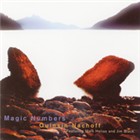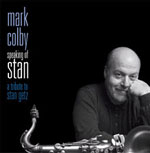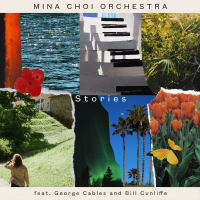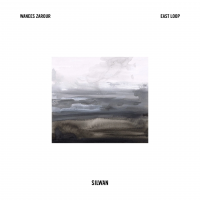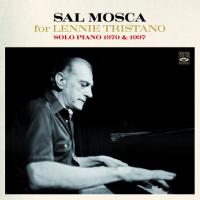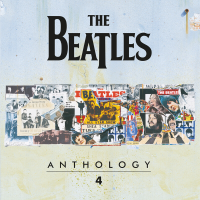Home » Jazz Articles » Album Review » Quinsin Nachoff: Magic Numbers
Quinsin Nachoff: Magic Numbers
Nachoff's compositions are lush but labyrinthine. Interwoven string parts commingle with a rhythm section of astonishing dexterity for a dynamic session that veers from hushed whispers to an almost rock-like intensity.
As a soloist, Nachoff has a burnished, refined tone. His nuanced, breathy timbre is laced with an understated intensity akin to Joe Lovano or Joe Henderson. Bassist Mark Helias acts as a tether between the string quartet and the trio, while Jim Black's idiosyncratic, funky drumming pushes the ensemble into unexplored realms. At its most rhythmic, Nachoff's string writing seems custom designed to interlock with Black's sense of mercurial timing. The string quartet has a solid solo voice in leader Nathalie Bonin's violin, and no member ever sounds like a mere chart reader.
Nachoff's intricate writing never strays far from melody. The opener, "There and Back," has an insinuatingly catchy theme, with a funky undercurrent that the group uses as a springboard for endless rhythmic variations, supporting the leader's sinewy soprano. Nachoff's romantic streak comes to the fore in "October," a wistful ballad that traffics in similar territory as the swirling melody of "Circles and Waves."
"How Post-Modern of Me" embodies all the characteristics its title suggests. Jump-cuts, tricky rhythm changes, and a protean aesthetic are all on display. Nachoff doesn't allow the divergent sources of inspiration to devolve into academic whimsy. Jim Black's pummeling trap set invokes Sabbath and Zeppelin—and the string quartet's quicksilver Jekyll and Hyde transformation from folksy plucking to hardscrabble skronk—conjur Stravinsky and Bartok respectively, but heard together, these elements sound seamless.
Nachoff's compositions embody a sense of varied dynamics that is nothing short of masterful. There are moments when the string quartet rests while the trio forges ahead. On others, such as "Whorls," the rhythm section sits the piece out, letting the leader weave his soprano through a nuanced web woven by the string quartet. With the full group his meticulous attention to detail blossoms. On "Branches," Black unleashes his patented acoustic drum-n-bass thrashings, the throttling strings strain to keep up, only to dissolve into barely audible harmonics and arco effects.
"Sun-Day" closes the album definitively with a suite-like structure. It travels from pensive whispers to sonorous harmonies, bolstered by a mid-tempo groove. An unaccompanied string quartet curtails a pulverizing drum solo, only to yield to a frenzied duet between Black's polyrhythmic assault and the leader's impassioned multiphonic tenor. The composition concludes far from its origins.
No longer invoking the saccharine compromise of crossover accessibility, improvising jazz units augmented with strings are leading the forefront of new music collaboration. Quinsin Nachoff may be a relative unknown, but Magic Numbers should change all that.
Track Listing
There & Back; To Solar Piazza; How Postmodern of Me; October; Branches; Circles & Waves; Whorls; Sun-Day.
Personnel
Quinsin Nachoff
saxophoneQuinsin Nachoff: tenor and soprano saxophones; Mark Helias: bass; Jim Black: drums; Nathalie Bonin: violin; No
Album information
Title: Magic Numbers | Year Released: 2006 | Record Label: Songlines Recordings
Tags
PREVIOUS / NEXT
Support All About Jazz
 All About Jazz has been a pillar of jazz since 1995, championing it as an art form and, more importantly, supporting the musicians who make it. Our enduring commitment has made "AAJ" one of the most culturally important websites of its kind, read by hundreds of thousands of fans, musicians and industry figures every month.
All About Jazz has been a pillar of jazz since 1995, championing it as an art form and, more importantly, supporting the musicians who make it. Our enduring commitment has made "AAJ" one of the most culturally important websites of its kind, read by hundreds of thousands of fans, musicians and industry figures every month.


